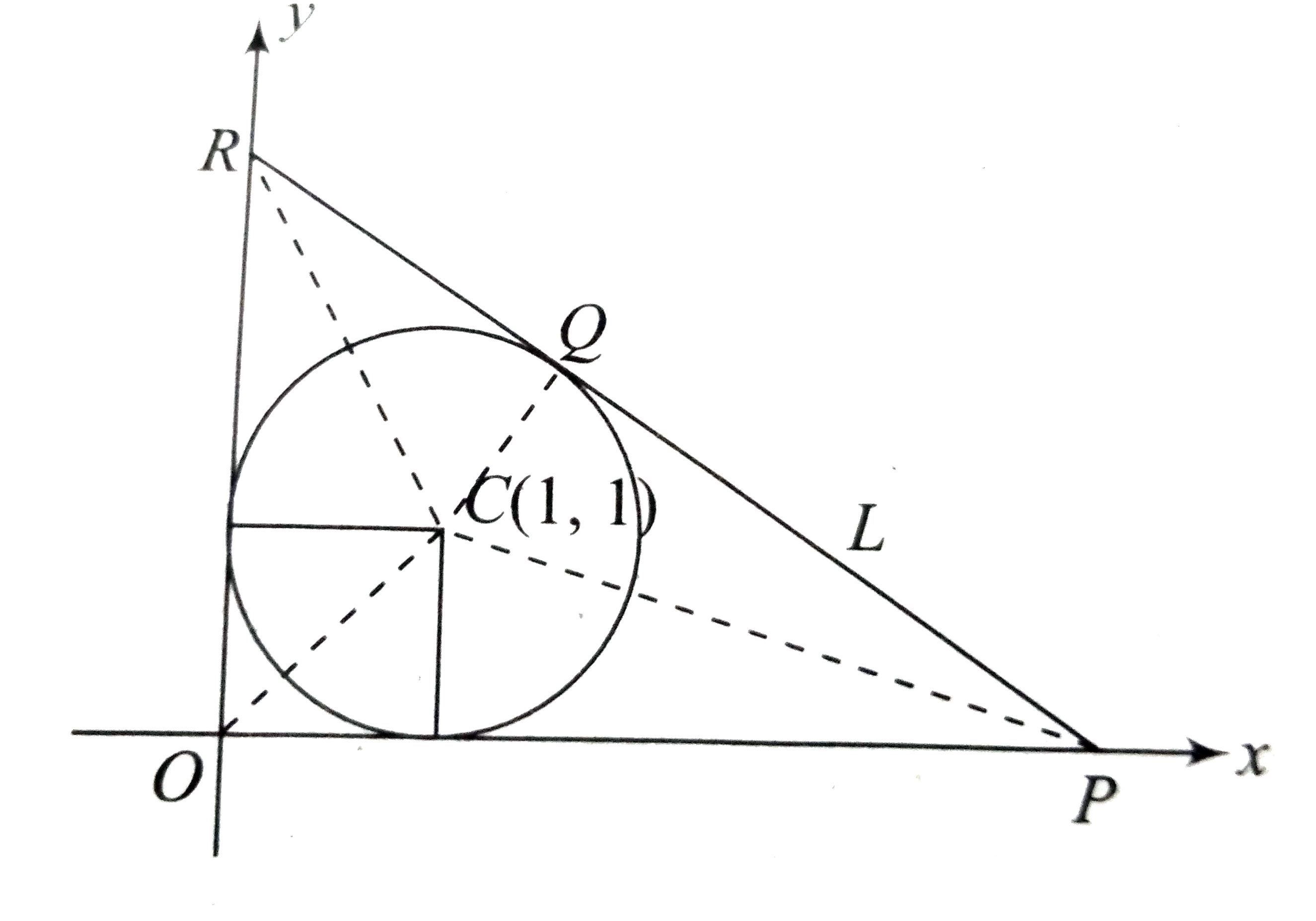Let S=S1∩S2∩S3, where s1={z∈C|z∣<4},S2={z∈C:ln[z−1+√3i1−√31]>0}and
S3={z∈C:Rez>0} Area of S=Solution in Bengali
10π3
20π3
16π3
32π3
The correct Answer is:B
S1:|z|<4, z lies inside the circle or radius 4 .
S2:√3x+y>0 z lies above the line √3x+y=0
S3Re(z)>0, z lies to the right of imaginary axis.

Area of region S1∩S2∩S3= shaded area
=π×424+42×π6=42π{14+16}=20π3
Topper's Solved these Questions
- COMPLEX NUMBERSBook:CENGAGE PUBLICATIONChapter:COMPLEX NUMBERSExercise:MATRIX MATCH TYPE
Explore 9 Videos
- COMPLEX NUMBERSBook:CENGAGE PUBLICATIONChapter:COMPLEX NUMBERSExercise:NUMERICAL VALUE TYPES
Explore 33 Videos
- COMPLEX NUMBERSBook:CENGAGE PUBLICATIONChapter:COMPLEX NUMBERSExercise:MULTIPLE CORRECT ANSWERS TYPE
Explore 49 Videos
- CIRCLESBook:CENGAGE PUBLICATIONChapter:CIRCLESExercise:Comprehension Type
Explore 8 Videos
- CONIC SECTIONSBook:CENGAGE PUBLICATIONChapter:CONIC SECTIONSExercise:All Questions
Explore 102 Videos
Similar Questions
Express the following complex number in polar form(reiθ):1+i√3
View SolutionWrite the following in z=a+ib form: z=13−2i
View SolutionIf z=ω,ω2whereω is a non-real complex cube root of unity, are two vertices of an equilateral triangle in the Argand plane, then the third vertex may be represented by z=1 b. z=0 c. z=−2 d. z=−1
View Solution
In the diagram as shown, a circle is drawn with centre C(1,1) and radius 1 and a line L. The line L is tangent to the circle at Q. Further L meets the y-axis at R and the x-axis at P in such a way that the angle OPQ equals θ where 0<θ<π2.
Coordinate of Q is
View SolutionGiven that A(1,1) and B(2,−3) are two points and D is a point on AB produced such that AD=3AB. Find the coordinates of D.
View SolutionLet S=S_(1)nn S_(2)nn S_(3), where s_(1)={z in C:|z| 0} and S_(3)={z in C:Re z>0
View SolutionIf z=(√32+12i)5+(√32−i2)5, then (a) im(z)=0 (b) Re(z)>0,Im(z)>0 (c) Re(z)>0,Im(z)<0 (d) Re(z)=3
View SolutionLet S=S1∩S2∩S3 where
S1={z∈C|z∣<4},S2={z∈C:lm[z−1+√3i1−√3i]>0} and S3:{z∈:Rez<0}
Let z be any point in A∩B∩C
The |z+1−i|2+|z−5−i|2 lies between
View Solutionमाना A, B, C सम्मिश्र संख्याओं के तीन समुच्चय है जो निम्न प्रकार से परिभाषित है।
A={z:Imz≥1}
B={z:|z−2−i|=3}
C={z:Re(1−i)z)=√2}
समुच्चय A∩B∩C में अवयवों की संख्या है
View Solutionमाना कि S=S1∩S2∩S3, जहाँ S1={z∈C:|z|<4},S2={z∈C:Im[z−1+√3i1−√3i>0} तथा S3={z∈C:Rez>0}
S का क्षेत्रफल =
View Solutionमाना कि S=S1∩S2∩S3, जहाँ S1={z∈C:|z|<4},S2={z∈C:Im[z−1+√3i1−√3i>0} तथा S3={z∈C:Rez>0}
z∈S––––––(Min)|1−3i−z|=
View SolutionLet the sum of n, 2n, 3n terms of an A.P. be S1,S2andS3 , respectively, show that S3=3(S2−S1)
View SolutionLet the sum of n, 2n, 3n terms of an A.P. be S1,S2andS3 , respectively, show that S3=3(S2−S1)
View SolutionLet the sum of n, 2n, 3n terms of an A.P. be S1,S2andS3 , respectively, show that S3=3(S2−S1)
View SolutionLet the sum of n, 2n, 3n terms of an A.P. be S1,S2and S3, respectively, show that S3=3(S2−S1).
View Solutionमाना कि S=S1∩S2∩S3 जहां S1=[z∈C|z∣<4},S2={z∈C:Im[z−1+√3i1−√3i]>0} तथा S3={z∈C:Rez>0}
S का क्षेत्रफल =
View Solution

